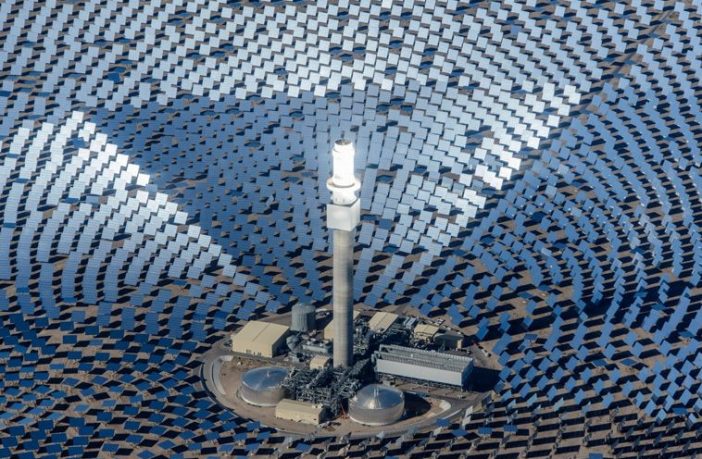- The US 2 Million research project is funded by the US Department of Energy.
- The research aims at improving performance of heliostat and molten salt energy storage technology, which is used both as a heat transfer fluid, as well as a thermal energy storage medium.
The US Department of Energy (DoE) through Solar Energy Technologies has partnered with SolarReserve to advance concentrating solar-thermal power (CSP) research and development. The $2 million contract is part of the DoE’s FY2018 SETO funding programme and will develop a best-in-class next generation heliostat design, optimised for CSP technology projections of the next decade.
International Independent Power producer, SolarReserve is partnering with South Africa’s Stellenbosch University and New Mexico based Sandia National Laboratories to conduct research and development on energy storage from solar concentrated technology. The aim is to be able to use storage to store solar energy to meet peak demand periods, even at night.
SolarReserve are the developers of the Redstone Solar Thermal Power Project located in the Northern Cape, South Africa. They use heliostats which are the dual-axis solar tracking mirrors that concentrate and focus the sun’s energy onto an energy collection receiver atop a central tower.
Within the receiver, fluid flows through piping that forms external walls; this fluid absorbs the heat from the concentrated sunlight. In SolarReserve’s technology, the fluid utilised is molten salt, which is used both as a heat transfer fluid, as well as a thermal energy storage medium.
Kevin Smith, SolarReserve’s CEO, said: “We are excited to participate in this initiative and aggressively drive innovation that will lower delivered cost of solar electricity that has the added benefit of round-the-clock availability through energy storage.
“Through this award, we can develop breakthrough solutions for cost-effective sustainable energy now and for the generations to come – with the goal of fostering new industries and creating thousands of U.S. jobs.”
The heliostat field can account for up to 50% of a CSP project’s capital cost; hence it is a critical component in any cost reduction initiatives.
Author: GBA News Desk
This article was originally published on ESI Africa and is republished with permission with minor editorial changes.











